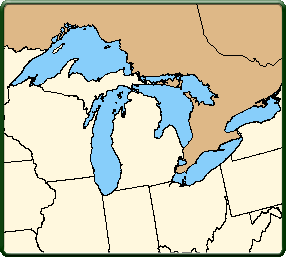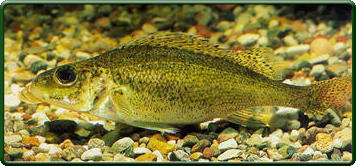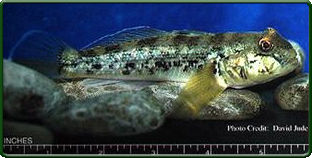Evaluation of tools for management of nonindigenous species

The Great Lakes are being invaded by an ever-increasing number of exotic aquatic species. Most of these immigrants are native to Eurasia and were presumably introduced during the 1980s as a result of unregulated ballast-water exchange.
The proliferation of some of these species such as the zebra mussel (Dreissena polymorpha), the Eurasian ruffe (Gymnocephalus cernuus), and the round goby (Neogobius melanostomus) have had adverse ecological and economic consequences in the Great Lakes region.
As these unwelcome organisms become more abundant and widely distributed in the Great Lakes region, it is increasingly likely that some will expand their range to suitable portions of other interior drainage basins such as the Mississippi River.
 The
objectives of this project are (1) to evaluate the relative sensitivity
of round goby and Eurasian ruffe to selected piscicides, and (2) to measure
the avoidance or attraction behavior of these nonindigenous species when
exposed to various concentrations and formulations of the piscicides.
Standard toxicity tests are used to evaluate the sensitivity of nonindigenous
species to piscicides compared to native species.
The
objectives of this project are (1) to evaluate the relative sensitivity
of round goby and Eurasian ruffe to selected piscicides, and (2) to measure
the avoidance or attraction behavior of these nonindigenous species when
exposed to various concentrations and formulations of the piscicides.
Standard toxicity tests are used to evaluate the sensitivity of nonindigenous
species to piscicides compared to native species.
 Behavior
studies are used to determine avoidance or attraction responses of these
organisms when exposed to formulations of the piscicides. The tools identified
in these studies may be needed to control populations of nonindigenous
species and to prevent range expansion of species that are already established.
Behavior
studies are used to determine avoidance or attraction responses of these
organisms when exposed to formulations of the piscicides. The tools identified
in these studies may be needed to control populations of nonindigenous
species and to prevent range expansion of species that are already established.
Research on evaluation of tools for management of nonindigenous species began in 1994 and is scheduled for completion at the end of 2002.
Page Last Modified: April 3, 2018

